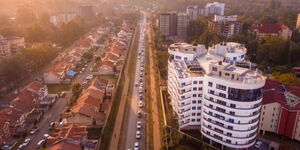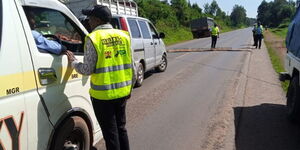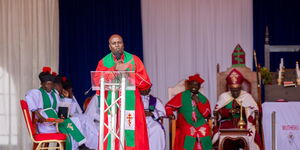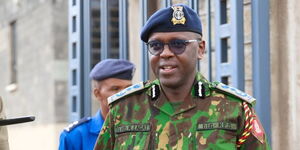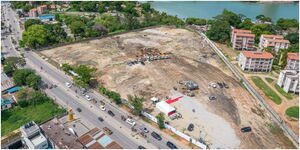UPDATE: The story was updated with a statement from Kenya Airways.
An internal investigative report by Kenya Airways has revealed how pilots maneuvered to save a plane after one of its engines caught fire mid-air.
The KQ flight 762 was destined for OR-Tambo Airport, in Johannesburg, South Africa when one engine caught fire forcing the pilots to perform an emergency landing at Dar es Salaam.
The incident took place on February 12, when the Boeing 787 Dreamliner developed mechanical issues.
According to the report, the crew received a warning that one of the engines was overheating as the plane was climbing out of JKIA.
After reaching a cruising altitude of 38,000 feet, it changed to a fire warning and the pilots began initiating emergency procedures to avoid disaster.
“On completion of the first four checklist memory items for FIRE ENG L, the fire warning ceased. They did not discharge the fire bottles as the fire warning had stopped.
“The crew then completed the remainder of the checklist items and opted to divert to the nearest suitable airport, which was Dar-es-Salaam (HTDA),” the Nation quoted the report.
All the 142 passengers and 10 crew members landed safely at 1:40pm in Dar es Salaam, 35 minutes after it took off from Nairobi.
All B787 Dreamliners have engine fire suppression systems. Besides, as a twin-engine aircraft, a B787 has extended twin-engine operations (ETOPS) which means it can fly for five-and-a-half hours on one engine.
Kenya Airways, on Tuesday, released a statement clarifying that during the incident, the crew talked to Operations Control through ACARS (Aircraft Communication And Reporting System) one of the three standard modes of communications used during flights.
"Operations Control had the position of the aircraft at all time on our system and a copy of the flight plan was left on the ground in Nairobi as required by law.
"The Aircraft Rescue and Firefighting Facility were on standby at the airport and runway and remained until the aircraft safely landed. The passengers and crew disembarked using the normal exits with no reported injuries. There was no post-flight incident fire," the airlines stated.
A review of the maintenance action on the engine was carried out after the event to eliminate any action that may have induced errors or fault leading to the incident. The affected engine was shipped off to the manufacturer (GE) for investigations onto the exact cause of the engine fire.
"Our records indicate that the aircraft was certified, equipped and maintained in accordance with existing regulations and approved procedures and that there were no recorded deficiencies affecting the performance of the flight prior to dispatch. The aircraft was returned to service on 26th Feb after engine replacement," the statement read in part.

